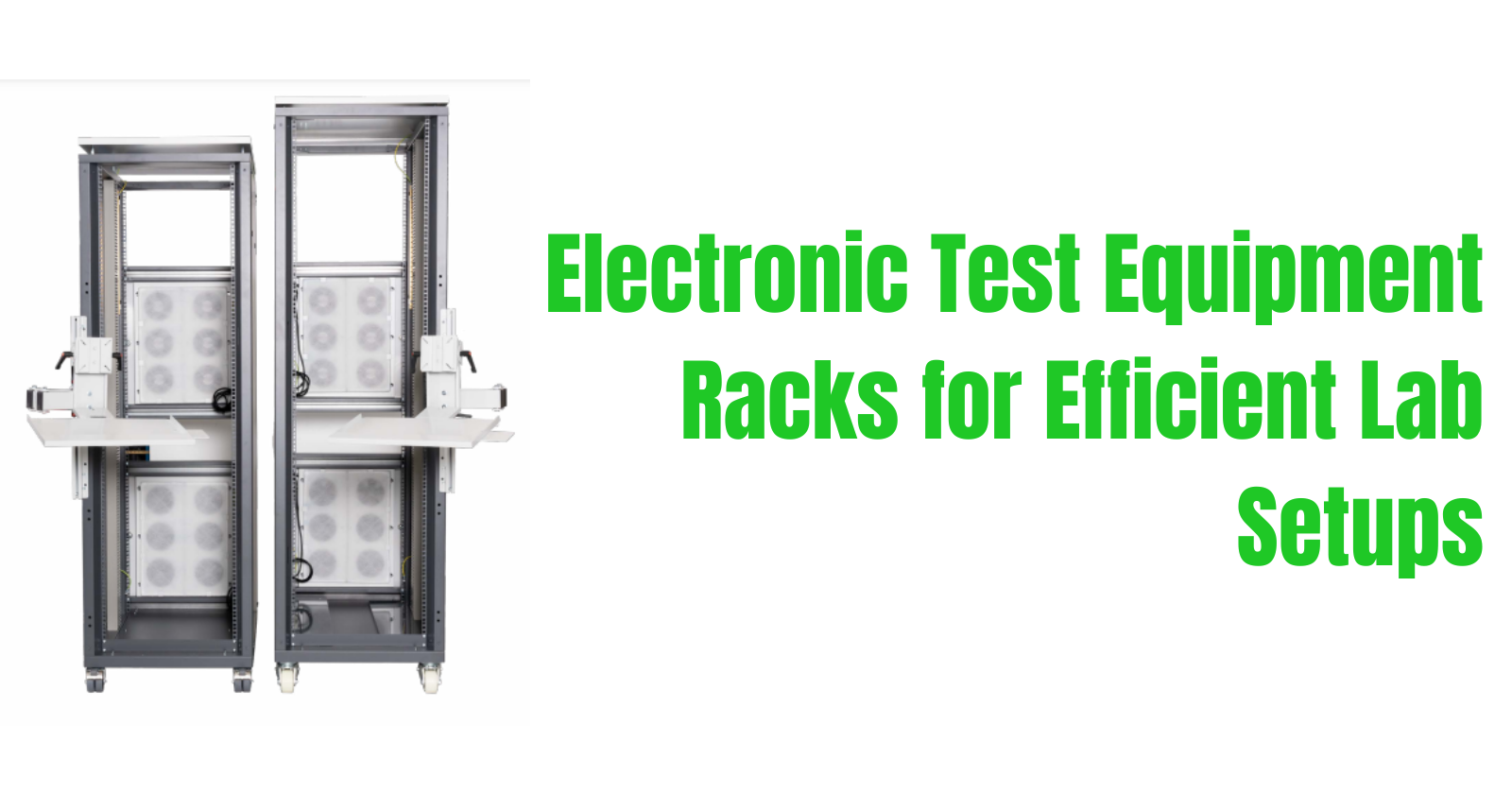
In today’s fast-paced world of electronics testing and development, efficiency is everything. Whether you’re managing a high-volume production environment or a precision-focused R&D lab, your testing setup plays a critical role in achieving reliable results. One often-overlooked aspect of test lab design is the layout and organization of hardware. This is where modern electronic test equipment racks make a real difference.
By investing in well-designed equipment racks, organizations can optimize workflows, reduce setup time, improve safety, and extend the longevity of their devices under test. In this blog, we’ll explore how modern equipment rack solutions are transforming test environments and what to look for when choosing one for your facility.
Why Test Lab Organization Matters
An efficient lab isn’t just about having the latest testing equipment—it’s about how that equipment is arranged and accessed. Disorganized cables, scattered instruments, and inadequate ventilation can lead to:
-
Increased downtime
-
Reduced testing accuracy
-
Complicated maintenance
-
Safety hazards
Modern electronic test equipment racks are designed to solve these challenges by offering structured, scalable, and space-efficient solutions. These racks serve as the backbone of any well-organized lab, bringing order to the chaos and enabling engineers to focus on what really matters—innovation and performance.
What Are Electronic Test Equipment Racks?
An electronic test equipment rack is a framework designed to house, organize, and secure test instruments and related hardware. These racks vary in size, from compact portable units to full-height equipment rack cabinets used in large-scale testing environments. Depending on your application, the rack might include:
-
Shelves and drawers for instruments
-
Cable management channels
-
Cooling and ventilation systems
-
Power distribution units
-
Mounting rails for modular equipment
They’re commonly used in electronics manufacturing, telecommunications, aerospace, automotive, and defense industries—anywhere precision testing is a daily operation.
Benefits of Modern Equipment Rack Cabinets
Modern equipment rack cabinets go far beyond simply housing hardware. They’re designed with flexibility and functionality in mind, offering features that contribute directly to your lab’s productivity:
1. Space Optimization
Test labs often operate in limited space. Rack-mounted configurations maximize vertical real estate, allowing you to stack multiple instruments efficiently without cluttering bench space.
2. Improved Cable Management
Integrated cable routing systems ensure that wires are organized and labeled, reducing the risk of connection errors and improving troubleshooting time.
3. Enhanced Cooling and Ventilation
High-performance electronics generate heat. Equipment rack cabinets are built with airflow considerations, often including pre-configured fan trays or openings for ventilation. This extends the lifespan of sensitive instruments.
4. Scalability
As your testing needs grow, modern racks allow for expansion. You can add new instruments, rearrange existing ones, or integrate automation equipment without a complete redesign.
5. Security and Access Control
Lockable doors and side panels help protect valuable test instruments while limiting access to authorized personnel.
Tailoring Rack Systems to Your Industry
Every industry has its own testing challenges, and rack systems must adapt accordingly. Here’s how electronic test equipment racks serve different sectors:
● Telecommunications
In telecom testing, maintaining signal integrity is crucial. Racks are often used to house RF signal generators, network analyzers, and switching systems. Proper cable shielding and grounding features are essential here.
● Automotive
Automotive testing requires rugged setups for vibration, EMI, and functional testing. Rack systems must be mobile, shock-resistant, and often integrated with end-of-line (EOL) automation tools.
● Aerospace and Defense
For mission-critical applications, rack systems must comply with stringent industry standards for shielding, power backup, and environmental durability. They also require modularity for rapid reconfiguration.
● Electronics Manufacturing
In high-throughput manufacturing lines, racks support automated test equipment (ATE) and robotics. Custom rack integration helps synchronize testing and handling systems for faster production cycles.
Key Features to Look For in a Rack System
When selecting the right equipment rack cabinet for your lab, consider the following:
-
Modularity: Can you reconfigure the rack easily for different projects?
-
Thermal Design: Does it support proper airflow for high-power equipment?
-
Weight Capacity: Can it support all your instruments securely?
-
Accessibility: Are all ports, panels, and connections easily reachable?
-
Integration Options: Can it house power units, servers, or automation modules?
Investing in the right rack solution not only makes your setup more professional but also enhances technician efficiency, reduces downtime, and improves testing accuracy.
Integration with Functional Testing Systems
Modern rack solutions often integrate directly with functional testing services. This includes incorporating hardware-in-the-loop (HIL) testing, environmental stress chambers, and signal switching matrices directly into the rack design. The result is a complete, self-contained testing station that improves data collection and reproducibility.
Automation is also a big driver. Rack systems can include robotic arms, automated fixture changers, and embedded PCs—all mounted in one coherent structure. This level of integration is key to reducing test cycle time and increasing overall throughput.
Designing for Future Readiness
As products become more complex and testing standards more rigorous, it’s important that your test setup is future-ready. A good electronic test equipment rack will accommodate evolving test strategies, such as:
-
5G and 6G testing protocols
-
Mixed-signal testing
-
IoT and sensor integration
-
Cybersecurity and compliance validation
A scalable and modular rack system ensures you won’t need a full infrastructure overhaul every time your testing needs shift.
Final Thoughts: Partnering for Performance
Choosing the right rack solution is more than a logistics decision—it’s a strategic one. A well-planned rack system reduces testing bottlenecks, enhances lab safety, and extends the life of expensive test equipment.
When you’re ready to take your lab to the next level, partnering with a provider that understands both the technical and operational sides of test system integration is key. Orbis Systems offers custom-designed electronic test equipment racks and complete turnkey solutions, including equipment rack cabinets tailored to your application. With a focus on flexibility, performance, and future-readiness, Orbis Systems helps your test environment evolve alongside your technology.